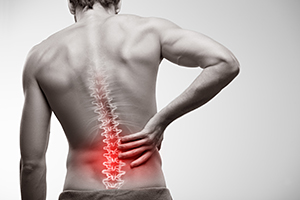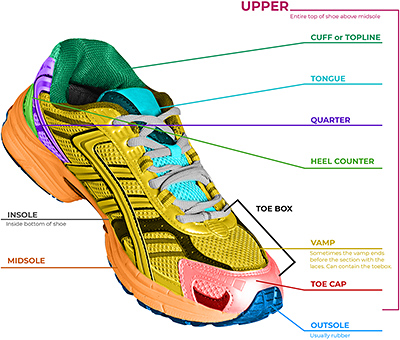As you know, about 80 percent of adults experience low back pain at some point in their lives. It is the most common cause of job-related disability and a leading contributor to missed work days. Other than adjustments, what natural methods do you use to address your patients' low back pain? Here are some tips:
1. Stretching Exercises
A recent study on back pain found that participants who followed a 12-week stretching and yoga regimen reported better back function, less pain and a reduced need for pain medication.1 Stretching works as an effective back pain treatment, and offers a more natural pain-relief solution than other common pain interventions, such as prescription painkillers or surgery.
Regular movement and stretching can help alleviate back pain by relaxing tight muscles and improving circulation to help nourish the spine and joints. Stretching helps loosen the muscles, helping improve existing back pain. Stretching can also strengthen the back, helping reduce the risk of suffering back pain in the future.
 Stretching the back and legs can help improve movement and flexibility for everyday activities such as putting on shoes, washing dishes, driving and more. By having your patients incorporate regular stretching into their fitness routines, they'll strengthen their backs and reduce the risk of injury or chronic pain.
Stretching the back and legs can help improve movement and flexibility for everyday activities such as putting on shoes, washing dishes, driving and more. By having your patients incorporate regular stretching into their fitness routines, they'll strengthen their backs and reduce the risk of injury or chronic pain.
2. Strengthening Exercises
Having strong core support is critical to decreasing the stresses placed upon the lumbosacral spine and pelvis. When someone is having lower back issues, they are tempted to remain motionless, but movement is often beneficial for back pain.
Stretching exercises
|
Core exercises can strengthen back, stomach and leg muscles. They help support the spine, relieving back pain. Doing exercises to strengthen the lower back can help alleviate and prevent lower back pain. According to research,2 exercise also increases blood flow to the lower back area, which may reduce stiffness and speed up the healing process.
3. Dietary Considerations
The nutrition industry has exploded over the past 10 years, but our food in the United States is still very unhealthy. Sooner or later, patients' bodies will end up paying the ultimate price.
Encourage your patients to keep a food diary. A good place to start is by having patients write down what they eat and drink every day. This will help them assess their diets. It will also help see if they need to eat more or less from certain food groups. Do they eat 4-5 cups of fruits and vegetables every day? Do they get enough calcium? Do they eat whole-grain, high-fiber foods? You may have to add or subtract foods based on this assessment.
Cut back on unhealthy fat. Ask them about unhealthy fats in your patients' diets. Rather than frying meat, suggest baking, grilling or broiling. Suggest taking off the skin before cooking chicken or turkey. Encourage patients to read the nutrition labels on foods before buying them.
Low-calorie beverages. Sweetened drinks add lots of sugar and calories to diets. This includes fruit juice, soda, sports and energy drinks, sweetened or flavored milk, and sweetened iced tea. Water and unsweetened tea are great alternatives.
Help set realistic goals. To help patients maintain their weight or avoid gaining weight, have them set realistic goals. Avoiding weight gain will help limit the stress on their backs – and rest of their bodies.
4. Proper Footwear
In general, people know very little about shoe design and quality. Terms like motion control, stability control and pronation control are used to try and appeal to patients who think fancy things are happening with their shoes. Unfortunately, our feet and biomechanics are so different that a shoe which works well for one person, often will not work well for another person.
When patients are shopping for shoes, have them focus on a proper fit. Keep in mind the ball of the foot, the toe box, hind/mid-foot support and heel stability. It is also a wise to have them find a quality shoe store whose employees are trained on how to properly measure feet and help find a great fit.
Another problem is that virtually no shoes have support for all three arches of the foot. This is where a great pair of custom orthotics come in.
5. Custom Orthotics
Most orthotics and insoles do not support the three functional arches of the foot. It is very easy to look at a generic insole or non-custom orthotic and see the lack of arch support. Because people have arch issues starting around the age of 7 (either pronating or supinating), checking the feet and being aware of their relationship to the ankles, knees, hips and spine is key.
 The best option for supporting not only the feet, but also the rest of the body, is by wearing a flexible, custom-made, three-arch orthotic. Patients are largely uneducated in this arena and do not understand the connection between arch support and their biomechanics. They are eager to learn more; all they need is you to explain it to them.
The best option for supporting not only the feet, but also the rest of the body, is by wearing a flexible, custom-made, three-arch orthotic. Patients are largely uneducated in this arena and do not understand the connection between arch support and their biomechanics. They are eager to learn more; all they need is you to explain it to them.
According to a study published in the Archives of Physical Medicine and Rehabilitation in 2017, custom orthotics alone are proven to reduce low back pain by 34.5 percent.3 Proper orthotic support works with a well-fitted shoe to help reduce shock to the body, maintain the chiropractic adjustments you provide, and keep the patient stable for longer periods of time.
References
- "Yoga or Stretching Eases Low Back Pain." NIH Research Matters, Oct. 31, 2011, reporting on a study in the Archives of Internal Medicine.
- Gordon R, et al. A systematic review of the effects of exercise and physical activity on non-specific chronic low back pain. Healthcare, 2016 Jun;4(2):22.
- Cambron JA. Shoe orthotics for the treatment of chronic low back pain: a randomized controlled trial. Arch Phys Med Rehab, 2017;98:1752-62.
Dr. Kevin Wong, earned a BS in exercise physiology from the University of California – Davis and his DC degree from Palmer Chiropractic College West. He practices in Orinda, Calif., and serves the Lamorinda, Berkeley, Walnut Creek and many other East San Francisco Bay Area communities. He is an expert on foot analysis, walking and standing postures, and orthotics, and lectures nationwide on spinal and extremity adjusting.




